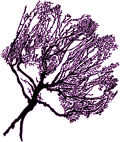The Waggle Dance as an Intended Flight: A Cognitive Perspective
The Waggle Dance as an Intended Flight: A Cognitive Perspective. Insects 10(12), 424. (2019)
News vom 30.03.2020
Abstract
The notion of the waggle dance simulating a flight towards a goal in a walking pattern has been proposed in the context of evolutionary considerations. Behavioral components, like its arousing effect on the social community, the attention of hive mates induced by this behavior, the direction of the waggle run relative to the sun azimuth or to gravity, as well as the number of waggles per run, have been tentatively related to peculiar behavioral patterns in both solitary and social insect species and are thought to reflect phylogenetic pre-adaptations. Here, I ask whether these thoughts can be substantiated from a functional perspective. Communication in the waggle dance is a group phenomenon involving the dancer and the followers that perform partially overlapping movements encoding and decoding the message respectively. It is thus assumed that the dancer and follower perform close cognitive processes. This provides us with access to these cognitive processes during dance communication because the follower can be tested in its flight performance when it becomes a recruit. I argue that the dance message and the landscape experience are processed in the same navigational memory, allowing the bee to fly novel direct routes, a property understood as an indication of a cognitive map. View Full-Text

